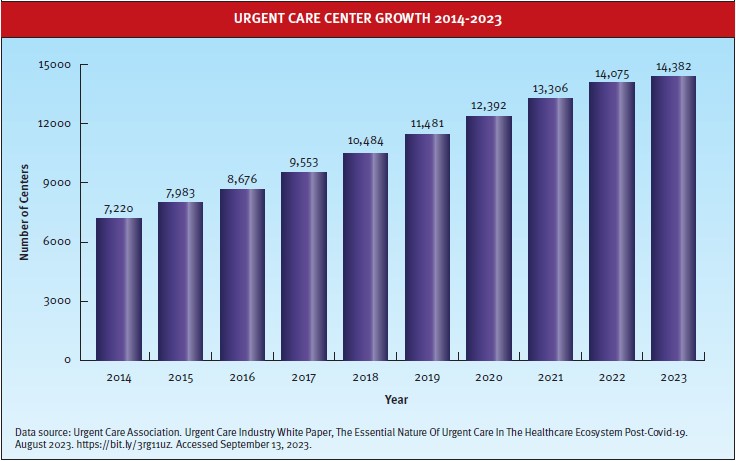Published on
Across the hills and valleys of healthcare, the rising power of the consumer has reshaped the landscape more than any other market shift in recent memory. Patient preferences are fueling demand for everything from virtual care to retail-store clinics. For urgent care, the innovations represent thrilling opportunity alongside equal measures of competition. The ratio of wins to losses will vary by market.
Yet even with the large-scale disruption, urgent care has grown with intention, both in terms of rooftops and in terms of services. The current growth rate is 7%, according to new deep-dive data from the Urgent Care Association (UCA). In its industry white paper, UCA notes that consumer behavior is a significant driver of center growth.
Comparing center numbers in 2014 to today, you’ll see a 100% increase in rooftops. That means consumer access to urgent
care locations has doubled in just a decade, representing an estimated 200 million patient visits per year. It’s doubtful any other healthcare segment with scale can claim a similar growth trend.
Another ubiquitous trend that translates well in the urgent care space is the fact that all healthcare is local. Although the pandemic era temporarily altered the delivery of certain types of care—and some permanent changes remain—patients and clinicians have largely returned to in-person settings. UCA data likewise reveals that more than 78% of Americans live within a 10-minute drive of an urgent care center.
Texas, California, New York, Florida, and North Carolina rank as the top five states for growth. It seems obvious that the most populous states would have the most centers, but it’s more than just the number of consumers in the market. Payer mix, rural health needs, and demographic trends also figure in.

